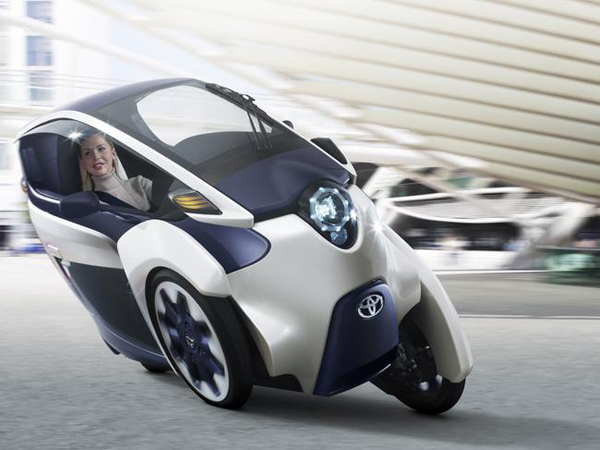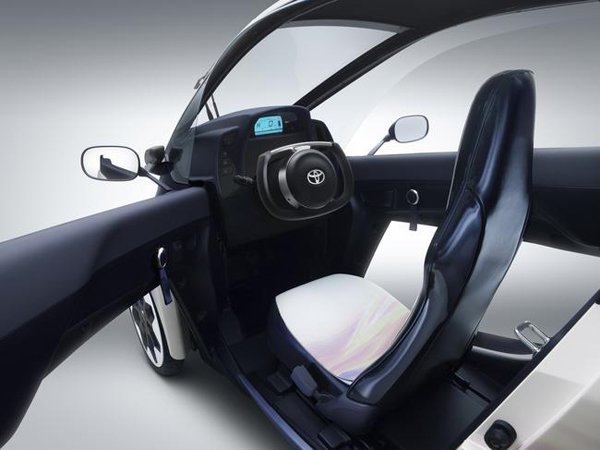Toyota, at the Geneva Auto Show, has unveiled a rather unique new all-electric, three wheel “personal mobility device” which looks like something out of a futuristic movie. Dubbed the I-Road, it is a concept study seen as a bridge gaping platform that’s more environmental friendly and helps commuters riding mass transit or driving private vehicles to complete their travels to a city center in an effort to reduce both congestion and air pollution within urban settings.

The I-Road, as designed, has a range of just over 30 miles. In the scenario Toyota describes for its deployment, this limited range electric vehicle would be driven from “urban perimeter transportation hubs” to finish the journey to an inner city destination.
To contend with narrow city streets in older cities in particular, one of the primary features is an “Active Lean” function, which allows for automatic leaning as one corners. It consists of “a lean actuator motor and gearing mounted above the front suspension member, linked via a yoke to the right and left front wheels. An ECU calculates the required lean based on steering angle, gyro-sensor and vehicle speed information. And the system automatically moves the wheels up and down in opposite directions, applying lean angle to counteract the centrifugal force of cornering.”

This two-seater device is small by design, measuring 7.7 feet long, 5.7 feet tall, 2.8 feet wide and with a wheelbase of 67 inches. These compact dimensions would allow for up to four I-Roads to be parked in a single conventional parking space.

Under the hood the I-Road’s powertrain consists of a lithium-ion battery providing power to a pair of 2 kW electric motors mounted within the front wheels. This battery can be fully recharged from a conventional household power outlet in reportedly just three hours. Those riding around in this vehicle are encased in what’s described as a safer, weatherproof, closed body construction versus riding a motorcycle. This more “car-like on-board environment” allows as well for integration of features like lighting, heating, an audio system and Bluetooth mobile phone connectivity.
Now lest you think this is just another pretty design which will never see actual street use, Toyota also announced plans to include a new vehicle based upon the I-Road as part of a trial for ultra-compact, urban EV car sharing in the city of Grenoble, France. It will be amongst a fleet of some 70 electric vehicles, including as well the COMS ultra-compact vehicle produced by Toyota Auto Body. This project is set to kick off by the end of 2014 and will run for three years.